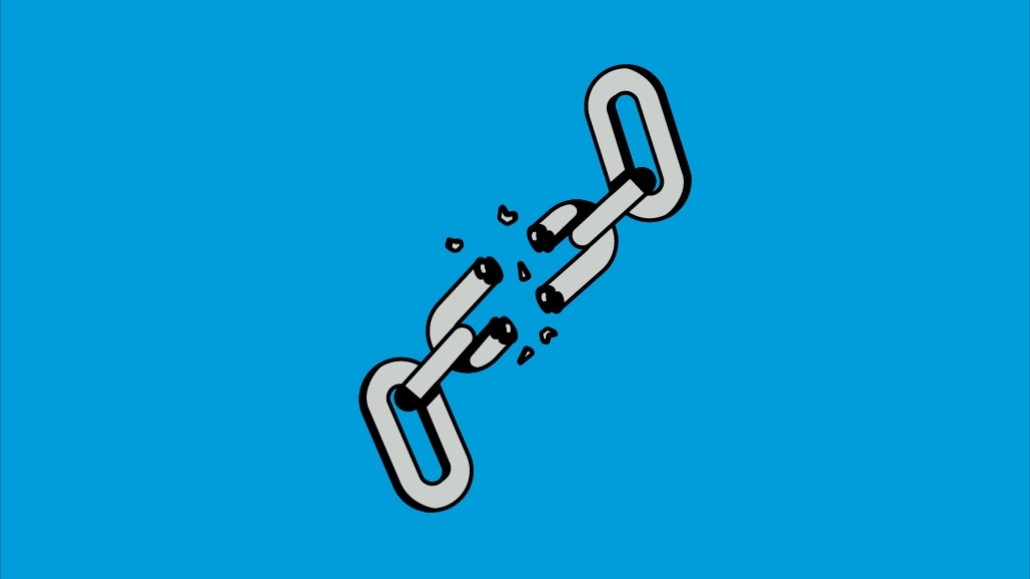Insights from CTV leaders at Dentsu, Horizon Media and more
Publishers still find it challenging to measure readers bypassing their paywalls

Publishers began closing loopholes that allowed people to bypass their paywalls with fervor back in 2019, but it’s still a challenge for publishers to measure and block people who are finding those gaps.
A local publishing exec, who requested anonymity to speak freely, said the percentage of their readers bypassing their paywall is “low,” but it wasn’t “a reliable number.”
“We’ve never had really good data about that,” said Michael Silberman, svp of strategy at paywall platform Piano. [Editor’s note: Piano is a contracted vendor with Digiday.]
Publishers can see if anonymous users (those not subscribed or registered) are reading premium content or reading more pages than a metered paywall allows, said Arvid Tchivzhel, managing director at Mather Economics’ digital consulting practice. He estimates about 4-5% of readers are doing this.
But Matt Boggie, chief technology and product officer at The Philadelphia Inquirer, called it an “imprecise” calculation. This is primarily due to the different tactics people use to circumvent paywalls — from ad blockers to web crawlers.
How people get through paywalls
There are two main mechanisms for delivering a paywall: JavaScript-based paywalls and paywalls built on a content delivery network (CDN).
JavaScript-based metered paywalls are a cheaper option for publishers but are easier to get around with ad blockers that also block JavaScript, according to Tchivzhel. Some browsers like SigmaOS have ad blockers built into them.
Ad blockers can also disable tracking via cookies, making it difficult for publishers to see if anonymous users coming to their sites had previously deleted or blocked cookies.
Publishers can add a piece of code to detect ad blockers, but more code means a larger page size and page load time, which can impact SEO and could lead to people abandoning webpages.
It also isn’t “foolproof,” said the first publishing exec. Their organization is looking into migrating from a JavaScript-based metered paywall to a CDN.
Other tools like 12ft.io use a web crawler to get through paywalls by mimicking search engine bots, which crawl and collect information from sites to provide links in response to search queries.
A ‘minuscule’ game of ‘whack-a-mole’
A top editor at a large local news organization, who also asked to remain anonymous, called it a game of “whack-a-mole.”
There is evidence that closing paywall loopholes can lead to more revenue for publishers. In 2019, The Boston Globe stopped people from using their browser’s incognito mode to bypass their paywall. The number of people who subscribed after hitting the paywall tripled.
But some publishers that spoke to Digiday weren’t too concerned about people skirting their paywalls, mostly because it was a small percentage of their overall readership doing so, from what they could see.
Fiona Spooner, managing director of consumer revenue at the Financial Times, told Digiday only a “small group” of their audience was getting through their paywall.
A head of content and digital engagement strategy at a local publisher who also requested anonymity said the traffic coming from new paywall loophole tactics was “miniscule.”
Boggie said his team is prioritizing growing their audience. “Ultimately, it’s a percentage game and if we can grow the size of the audience generally, then the impact that we see from any of these tools is smaller,” he said.
More in Media

Digiday+ Research: Publishers pull back their dependence on digital revenue
After a year in which publishers shifted their revenue dependence away from traditional channels and toward digital channels, 2025 has seen a shift back toward more of a balance between traditional and digital revenue sources.

LinkedIn makes it easier for creators to track performance across platforms
Creator data is becoming more accessible to third-party vendors via a new API — another step in LinkedIn’s creator platform evolution.

Ad Tech Briefing: The ‘plumbers’ posing as the unlikely saviors of the internet
After several false dawns, can Cloudflare’s ‘anti-AI scraping tool’ finally offer publishers a road to commercial redemption?








